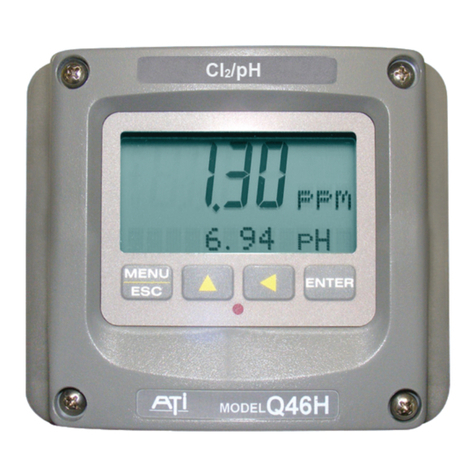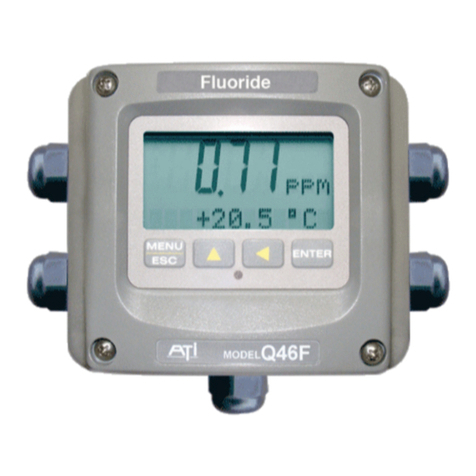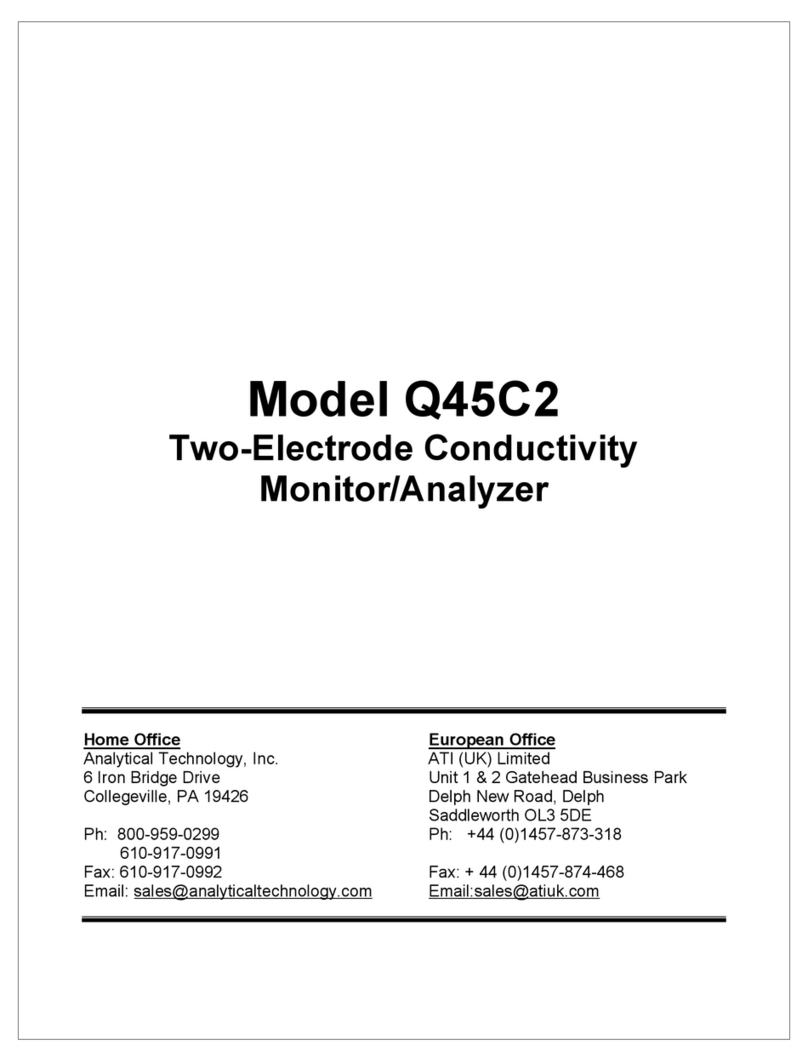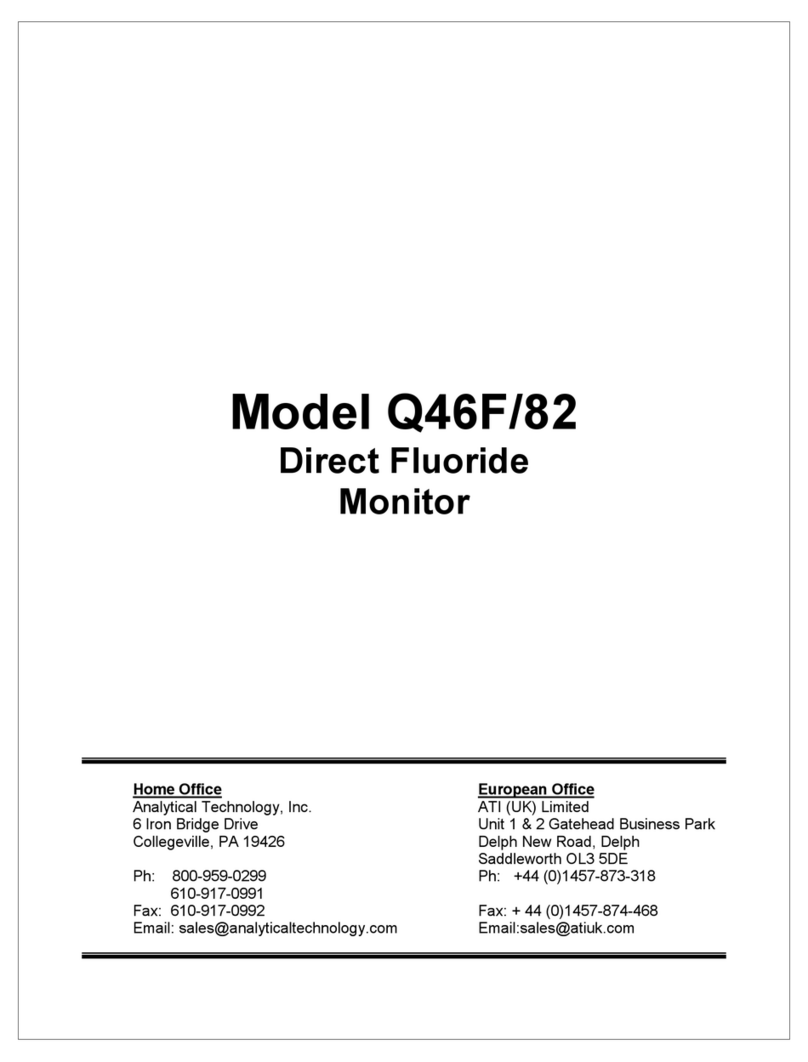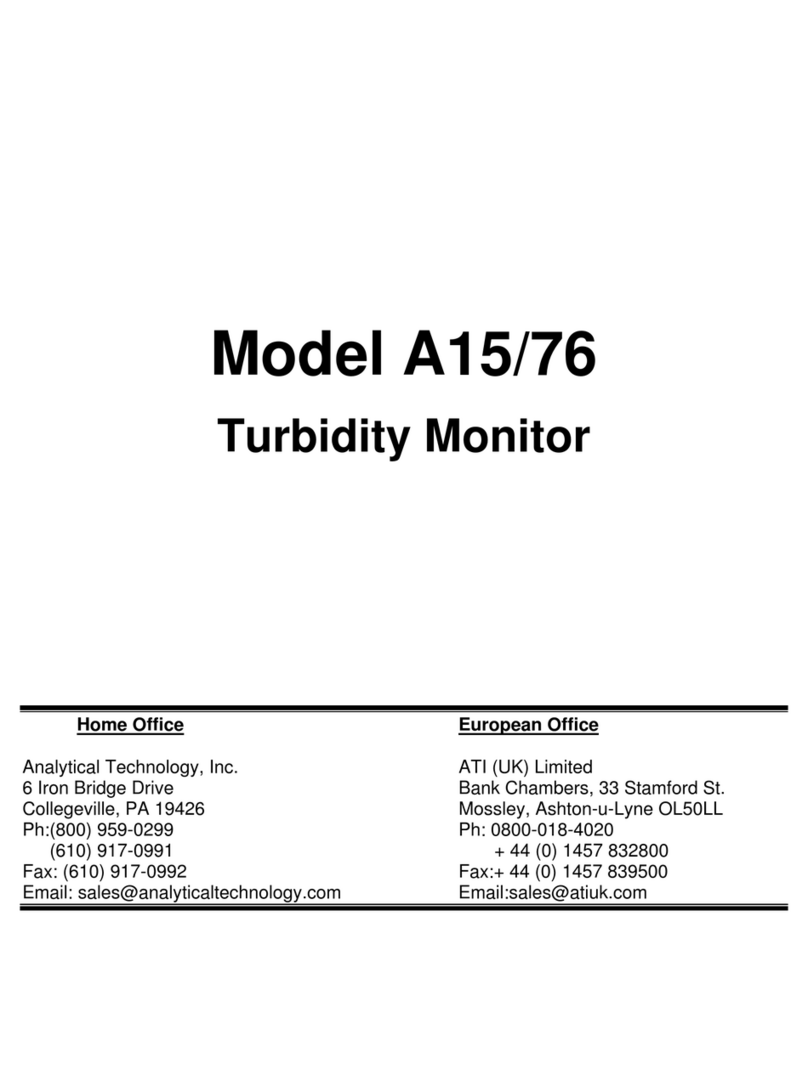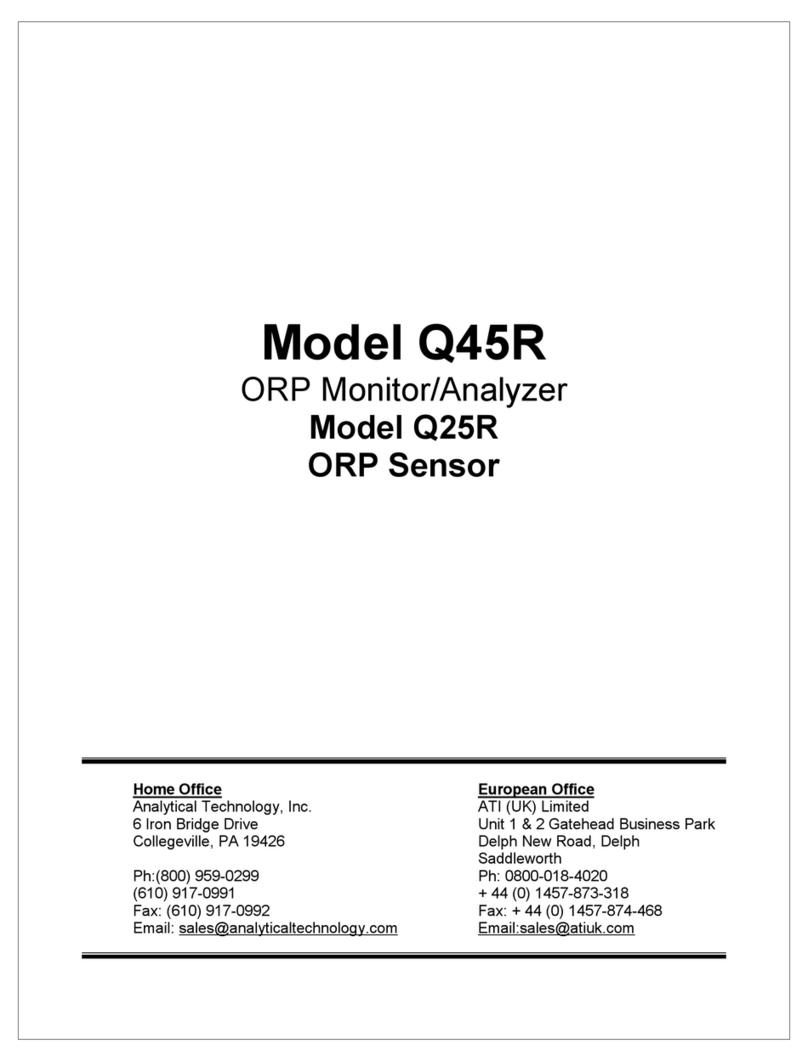
O & M Manual
Revision K (01/07) - 2 -
Table of Contents
PART 1 - INTRODUCTION......................................................................................................................................4
1.1 General...........................................................................................................................................................4
1.2 Features..........................................................................................................................................................5
1.3 Q45C2 System Specifications .......................................................................................................................6
1.4 Q45C2 Performance Specifications...............................................................................................................8
PART 2 – ANALYZER MOUNTING.......................................................................................................................9
2.1 General...........................................................................................................................................................9
Figure 2-1 Q45 Enclosure Dimensions, AC Powered Units (ATI-0706) .....................................................10
Figure 2-2 Q45 Enclosure Dimensions, 2-Wire and Battery Units (ATI-0655)...........................................11
2.2 Wall or Pipe Mount .....................................................................................................................................12
Figure 2-3 Wall or Pipe mount Bracket (ATI-0707) .....................................................................................12
Figure 2-4 Wall Mounting Diagram (ATI-0709)..........................................................................................13
Figure 2-5 Pipe Mounting Diagram (ATI-0710.............................................................................................13
2.3 Panel Mount, 2-wire Transmitter.................................................................................................................14
Figure 2-6 2-Wire Panel Mount and Cut-out (ATI-0661) ............................................................................14
2.4 Panel Mount, AC Powered Monitor............................................................................................................15
Figure 2-7 115/230 VAC Panel Mount and Cut-out (ATI-0711) ..................................................................15
PART 3 – ELECTRICAL INSTALLATION..........................................................................................................16
3.1 General.........................................................................................................................................................16
3.2 Electrical......................................................................................................................................................16
Figure 3-1 Cable Description, Model Q25C2...............................................................................................17
3.2 Two-Wire.....................................................................................................................................................17
Figure 3-2 Loop-Power Connection, Q45C2 Transmitter ...........................................................................18
3.21 Load Drive...............................................................................................................................................19
3.3 115/230 VAC w/Relays...............................................................................................................................19
Figure 3-3 Line Power Connection(ATI-0747) .............................................................................................21
Figure 3-4 Relay Contacts (ATI-0712).........................................................................................................22
3.4 Sensor Wiring..............................................................................................................................................22
3.5 Direct Sensor Connection............................................................................................................................22
Figure 3-5 Sensor Cable Preparation............................................................................................................23
3.6 Junction Box Connection.............................................................................................................................24
Figure 3-6 Junction Box Interconnect Wiring (ATI-0748)...........................................................................24
PART 4 – CONFIGURATION.................................................................................................................................25
4.1 User Interface ..............................................................................................................................................25
Figure 4-1 User Interface (ATI-0654) ..........................................................................................................25
4.11 Keys.........................................................................................................................................................26
4.12 Display.....................................................................................................................................................26
4.2 Software.......................................................................................................................................................28
4.21 Software Navigation...............................................................................................................................28
Figure 4-2 Software Map..............................................................................................................................30
4.22 Measure Menu [MEASURE]...................................................................................................................31
4.23 Calibration Menu [CAL] ............................................................................................................................32
4.24 Configuration Menu [CONFIG].............................................................................................................33
Figure 4-3 Control Relay Example, Hysteresis and Two Opposite Phase Options ......................................36
Figure 4-4 Alarm Relay Example.................................................................................................................36
4.25 Diagnostics Menu [DIAG].........................................................................................................................40
PART 5 – CALIBRATION.......................................................................................................................................44
